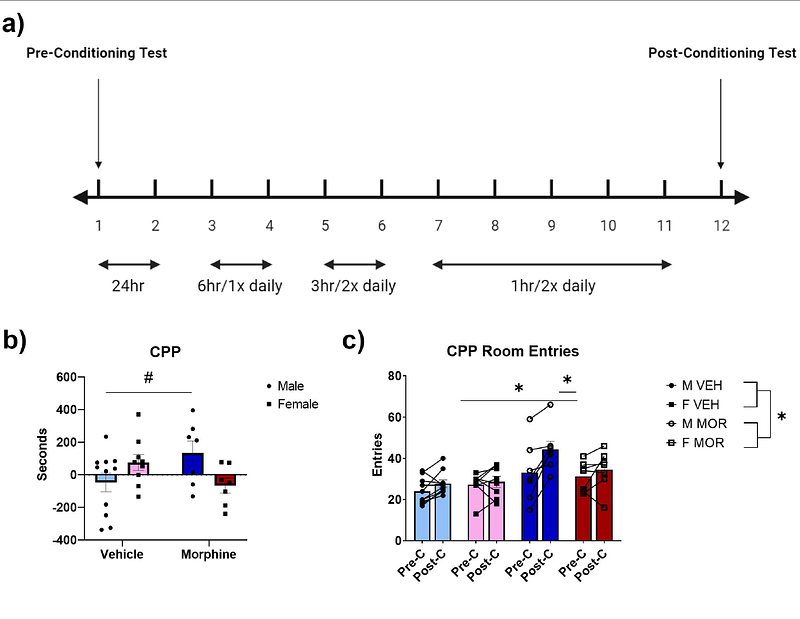Perigestational Opioid Exposure Alters Alcohol-Driven Reward Behaviors in Adolescent Rats

Perigestational Opioid Exposure Alters Alcohol-Driven Reward Behaviors in Adolescent Rats
Searles, C. T.; Harder, H. J.; Vogt, M. E.; Murphy, A. Z.
AbstractEvery fifteen minutes, a baby is born in the U.S. experiencing neonatal opioid withdrawal syndrome (NOWS). Since 2004, the rate of NOWS has increased 7-fold. Clinical studies have established intrauterine exposure to drugs of abuse as a risk factor for adverse health outcomes in adult life, including the propensity for future illicit drug use. Despite extensive knowledge about common mechanisms of action in the neural circuitry that drives opioid and alcohol reward, there is little data on the risks that those born with NOWS face regarding alcohol use later in life. Here, we investigate the impact of perigestational opioid exposure (POE) on the mesolimbic reward system of male and female Sprague Dawley rats at postnatal and adolescent ages. Our laboratory has developed a clinically relevant model for morphine exposure spanning pre-conception to the first week of life. Using this model, we found that POE increased alcohol consumption in female rats under noncontingent conditions, and inversely, reduced alcohol consumption in both male and female rats during operant conditioning sessions. Operant responding was also reduced for sucrose, suggesting that the impact of POE on reward-seeking behaviors is not limited to drugs of abuse. Expression of -opioid receptors was also significantly altered in the nucleus accumbens and medial habenula, regions previously shown to play a significant role in reward/aversion circuitry.